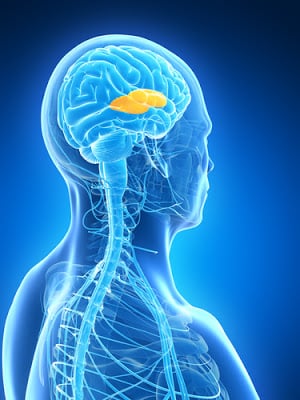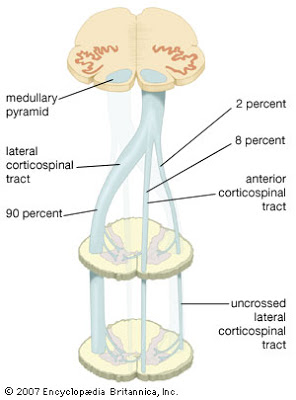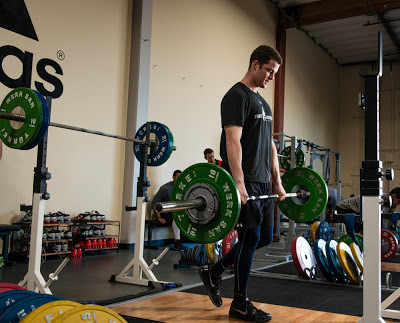
Fear paralyzes us all, particularly during times of uncertainty. And few situations mimic this uncertainty as much as when you sustain an injury.
When will I be back to full function?!!?
Will I ever be the same again?!!
The easiest thing to do during an injured state is nothing, because at least you are not making the problem worse.
But this process of avoidance and denial is being disproven by science at a rapid rate. It is the dawn of new era of science; brain drugs, IQ hacking, and sensory training. Ironically, we have forgotten the most important structure that can still be enhanced during injury, the nervous system.

Some quick anatomy on the nervous system, which controls the actions of the body by transmitting signals (see Sparta Point). First, we will discuss the corticospinal tract, which carries signals from the brain to the spinal cord shown to the right.
These highways contain mostly axons, which are projections of nerve cells. Axons are covered in myelin which regulates conduction speed and synchronization, making movements faster and more coordinated like adding insulation to electrical wires. About 90% of these axons cross on their way from the brain to the spinal cord, explaining why the left side of the brain controls the right side of the body and vice versa.
The second major structure, the putamen, is in the brain itself and is interconnected with many other structures. So it has no specific specialization other than controlling many types of motor skills. Of particular interest is its role in motor learning and the control of movement, your Movement Signature.
A March 2013 study examined the effects of training just one side of the body on these structure of the nervous system, a term called cross education. The authors found changes in the opposite side for the corticospinal tracts, as well as decreased putamen volumes. Specifically the corticospinal tract had more myelination or increased axon denisty. These results have been shown before; increase electrical activity increases myelination, even in just a few days!
A reduction in putamen volume is not bad, as it has also been found in elite athletes such as ballet dancers. It is likely a pruning process, in fact putamen comes from the Latin word “falls off in pruning.” During training, skills are repeated and hopefully enhanced, causing more inefficient inputs and outputs into the brain, a phenomenon called neuroplasticity (see Sparta Point).

The authors found one key to the previously mentioned evidence for structural brain changes from resistance training.
The greater the magnitude of stimulus, the greater changes in the nervous system. This study found cross education was even greater than the 30% observed in other studies due to the higher training load.
Our coaches use a check down system of audibles to address any unforseen injuries. The prescription is still based off the Movement Signature, but if any pain or uncertainty is present, we checkdown to a movement of lesser intenisty. If an athlete needs LOAD and the prescribed squat presents pain, a 1 leg squat is used, followed by a sled drag.
This concept of audibles is the first part of response to injury; maintaining a training stimulus no matter what. Knowing these audibles allows you to react quickly, yet maintain the individual prescription. What are your audibles?
Palmer HS, Haberg AK, Fimland MS, Solstad GM, Iversen VM, Hoff J, Helgerud J, Eikenes L. Structural brain changes after 4 weeks of unilateral strength training of the lower limb. J Appl Physiol. 2013 Mar 14.